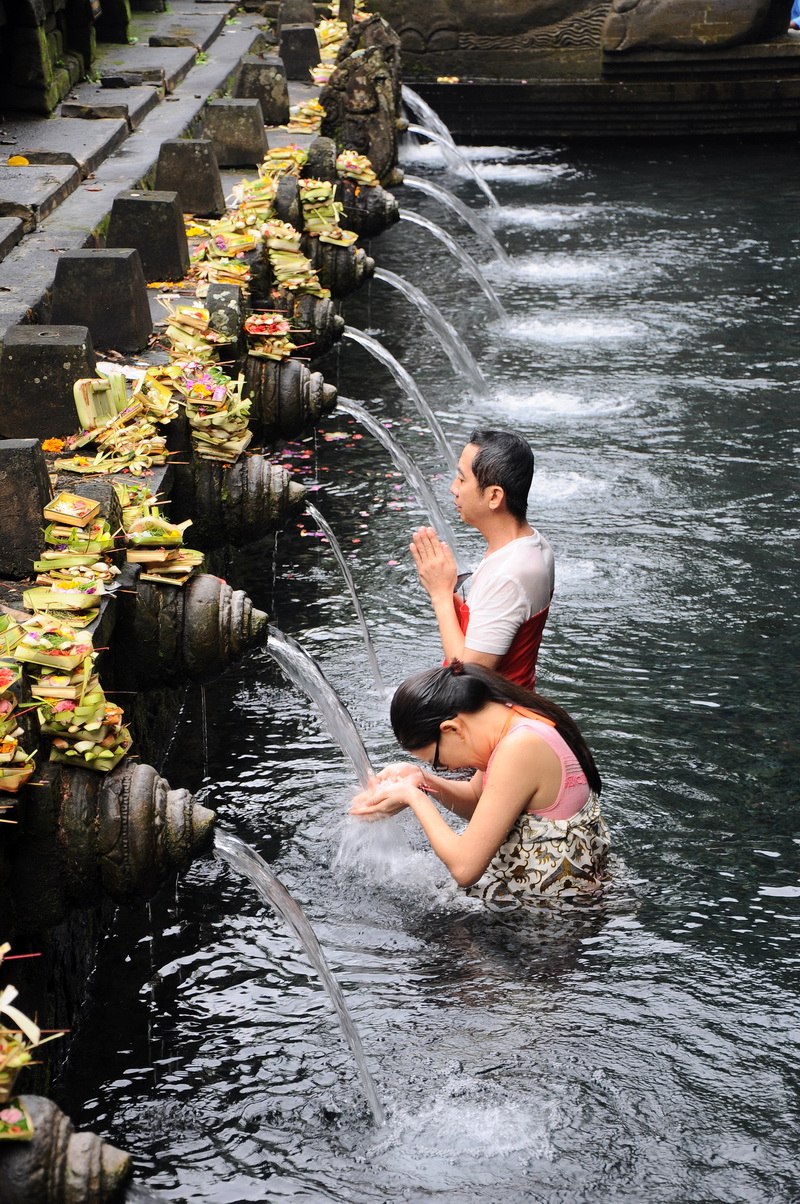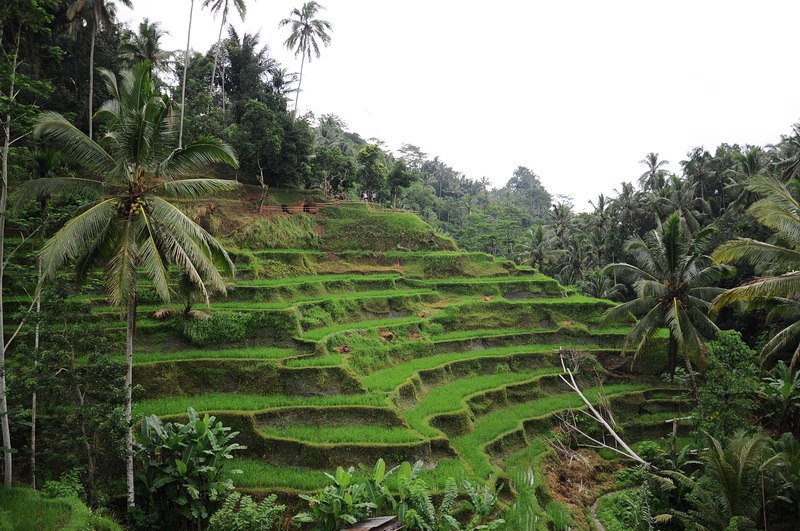KUALA LUMPUR, Malaysia – While Ukraine can’t seem to decide whether to leave winter behind and launch into spring, there’s no such uncertainty about the weather in Malaysia at this time of the year - or pretty much at any time of the year.
World Traveler: Escaping winter in tropical Malaysia, Singapore and Indonesia
It’s going to be warm, and it’s going to be wet.
Straddling the equatorial zone, Malaysia has daytime temperatures of from 32-34 degrees Celsius year-round. There are two wet, or monsoon seasons, that occur at different times in different parts of the country. Annual rainfall, while almost double that in Ukraine, is spread much more evenly over the months of the year, and when it rains, it tends to pour.
So stepping outside the airport of the Malaysian capital, Kuala Lumpur, I was hit by a blast of warm, wet air that caught in my throat and took some time to get used to – especially after the air-conditioned cool of the airport interior and transit vehicles.
Malaysia, truly Asia
Malaysia, and the city state of Singapore on the southern tip of the Malay Peninsula, truly are developed nations in Asia, with modern skyscrapers and business centers, and well-maintained infrastructure.
For me, a person used to potholed streets and cracked highways, illegal logging to build fancy houses, and poor English skills in my home country, it was hard to believe how far ahead Malaysia is. A former British colony, the country’s Malay and Chinese populations learn English as a second language from childhood, making the country an easy place to do business or explore as a tourist.
Still, I’d already heard good things about the country from Ukrainian ex-Economy Minister Pavlo Sheremeta, who previously worked as a president and senior consultant at the Blue Ocean Strategy Institute in Kuala Lumpur.
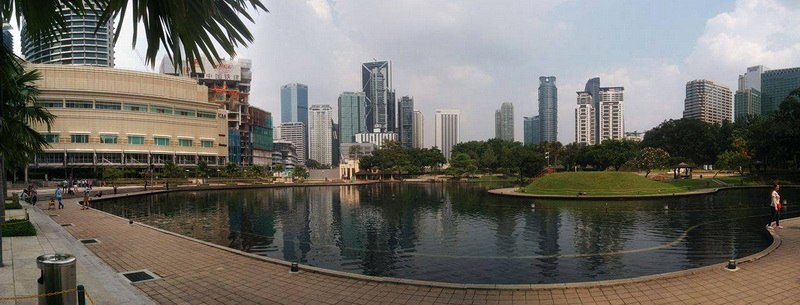
KL City Centre Park is located once behind the Petronas Twin Towers. Irena Tavpash
“I was immediately impressed with the Malaysian government, because… they all spoke English,” Sheremeta told me during an interview, adding that almost all the ministers had degrees from UK universities. As Sheremeta recalled, no Ukrainian ministers at that time, in 2011, had such qualifications.
Malaysia’s advertising slogan – “Malaysia, truly Asia” – is apt, as every aspect of that vast continent is represented there, from ancient sights, awesome nature, tropical beaches, and sprawling cites with skyscrapers.
While Islam is the country’s official religion, its constitution guarantees freedom of religion, and there are sizable Buddhist and Christian minorities, reflecting the population’s 20 percent Chinese makeup, and its British colonial past.
Spectacular view
My holiday started in the center of Kuala Lumpur at the Petronas Towers, the tallest twin towers in the world. The double building is an office center, shopping mall, and science museum rolled into one. The landmark’s sky bridge, which connects the two towers at a height of 170 meters, gives visitors an amazing view of the city.
From this vantage point, Kuala Lumpur presents a mix of greenery and high-tech buildings, with parks and garden squares interspersed among the concrete, glass and steel towers. The Perdana Botanical Gardens and nearby Bird Park are like a reserve of Malaysian jungle right in the center of the city.
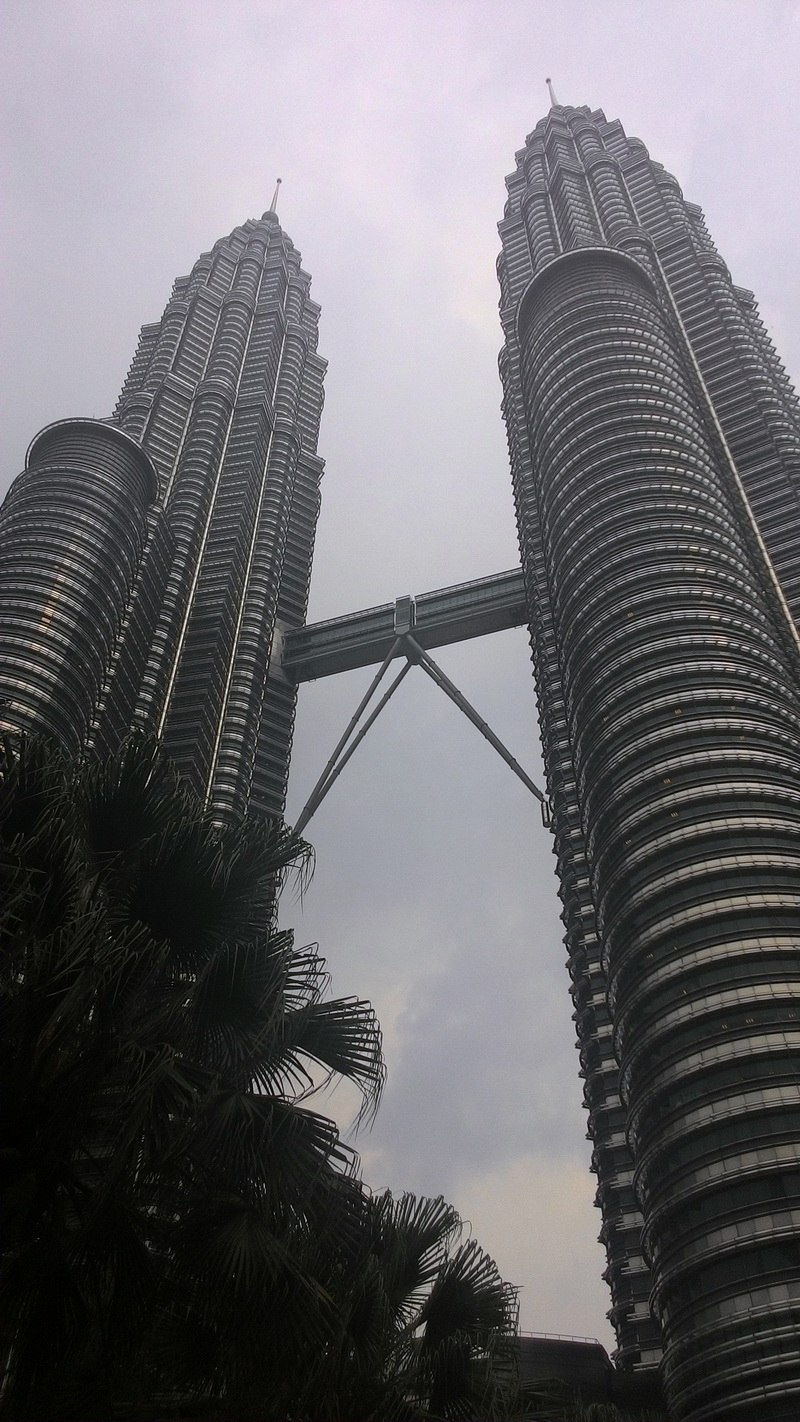
Landmark of Kuala Lumpur – Petronas Twin Towers in the capital of Malaysia. Yuliana Romanyshyn
Chinatown, Little India, cozy suburban districts with private houses – each with the obligatory swimming pool and palm trees in the yard – Kuala Lumpur offers plenty sights to visit.
Unfortunately, the city of 1.67 million is not a place to explore on foot — sidewalks are as rare in Kuala Lumpur as palm trees in Ukraine. It’s better to rent an Uber taxi driver or a motorcycle to get to the remoter areas of the city.
Take a commuter train to get to one of the most popular tourist spots, the Hindu shrine at Batu Caves, 15 kilometers from the city center. The temple is located 100 meters up in a limestone outcrop, in three main caves. A stairway of 272 concrete steps leads up to the cave entrance.
Climbing up the stairs, it’s best to go in a group, as lone tourists may fall prey to a macaque attack – the monkeys are bold enough to steal food and even water bottles from unwary travelers. I saw one woman lose a packet of food, while another nearly lost a flip-flop.
Outside the city
Beyond the noisy city, Malaysia offers quiet getaways in its mountains and on its coastlines.
Cameroon Highlands, roughly 200 kilometers from the capital, is a great spot for tourists to visit tea and strawberry plantations, mossy forests, and places of worship. Have a breakfast at the Boh Tea Estate with local picked black tea (starts from $1 for a cup) and European patisserie (starts from $1.5 per piece) with a view over the tea plantation. After that, take a jungle path to waterfalls and aboriginal villages, visiting Buddhist temples on the way.
The city of Malacca is another charming landmark of Malaysia, located 150 kilometers south of the capital, by the ocean. As one of the oldest Malaysian cities, it has preserved its Portuguese and Dutch colonial architecture, and has been listed as a UNESCO world heritage site.
Heading north up the western coast of peninsular Malaysia, visitors find the tropical paradise of the beaches and natural sights of Penang state. This area is also famous for street art murals painted by world artists in George Town city.
Singaporean wonder
At the southern tip of the Peninsular Malaysia lies the island city state of Singapore, which after a brief two-year attempt to be in a federation with Malaysia, opted for independence in 1965.
The city state is a global center of commerce, and is also known for its strict laws (famously, chewing gum is outlawed), low taxes, and its rich and multicultural residents.
To get to Singapore from Malaysia I took an 8-hour night train (similar to a Ukrainian platskart) for the low price of $11, but got a night with several tropical cockroaches in my bed as a bonus. Another way, which I used to return, is to fly with low-cost airline AirAsia ($40 one-way).
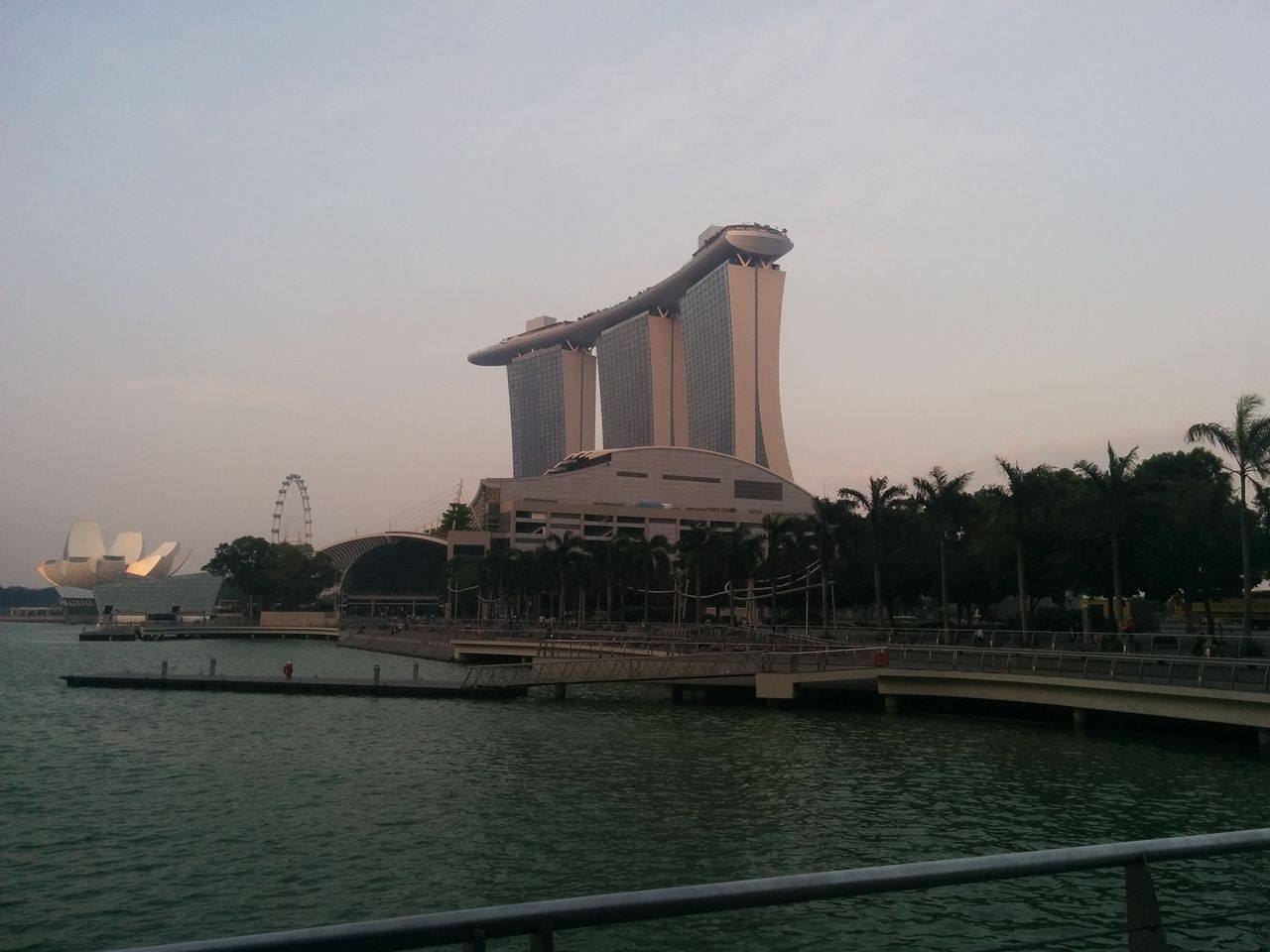
The central area of Singapore surrounded by parks, skyscrapers, and Marina Bay Sands three hotel towers with boat-shaped sky park on the top. Irena Tavpash
Richly multicultural, Singapore is to home to European, Canadian and U.S. financial experts. At 6 p.m., financiers and stock brokers leave their offices in the city’s skyscrapers and chat with their over beer in the city’s many street cafes. Others change out of their white collars into sports clothes and go for an evening run by the bay.
This city-state is easy to discover by foot or by the metro system, which covers the whole of Singapore. The districts are varied in character – and in some areas skyscrapers rub shoulders with two- and three-story traditional Chinese-style houses. Ethnically, Singapore is 74 percent Chinese – a result of the island’s former colonial masters, the British, bringing in Chinese workers to work on rubber plantations there in the mid-19th century.
The metro is the best way to get to the Singapore Zoo or its Chinese and Japanese gardens. But be sure not to eat or drink inside a metro car – it’s illegal. And as noted, chewing gum is also forbidden in Singapore, and the fine for spitting out gum on the streets is $700.
For party lovers, Singapore features rooftop bars, and the ones at the Marina Bay Sands Hotel are perhaps the best. The bars are next to the hotel’s infinity pool, the largest in the world, located 57 floors above street level, which offers bathers a spectacular view of the city.
The pool is just part of the 20-hectare SkyPark, a huge, curved deck perched on top of the Marina Bay Sands Hotel’s three 55-floor towers. There is also a range of shops and restaurants there, but it’s not a place for anyone with a fear of heights.
Only hotel guests are allowed in the pool, but the observation deck offers similar views and can be accessed for $20 – the SkyPark entry fee.
Singapore is also a place to feed a turtle in one of the biggest Live Turtle & Tortoise Museum, where more than 1000 turtles and tortoise live. Yuliana Romanyshyn
Indonesian paradise – Bali island
If one gets tired of developed Asia and comfort life, willing to explore untouched nature and cultural preserved sights, Bali seems a perfect start point to discover Indonesia. An island of 5,780 square kilometers in the Indian ocean with volcanic mountains, rice paddies, coral reefs, surfing and diving classes – Bali has plenty activities to offer.
Woman wash her face at the saint spring in Holy Spring Water Temple. Yuliana Romanyshyn
If one looks for a place to overwinter, Bali is exactly the right destination. Thanks to local low-cost airlines, the island is easy to enter from any other part of Asia (return ticket from Kuala Lumpur to Denpasar costs $80).
Perhaps, the best sight what Bali may offer is the ocean and its coast. It is as dangerous as beautiful, demands to respect its waves while surfing, swimming and diving.
Over one-two surfing classes, one will learn how to stay on the wave on a soft board, which is suitable exactly for younger surfers ($30 per one lesson). After a person used to the ocean water and swallowed enough ocean water, it is time to stand on a hard board and learn how to make turns.
Being exhausted from surfing under the burning sun, visit Uluwatu temple, built at the edge of a 70-meter high cliff. Inside the temple, there is an evening performance of sacral dancing in traditional clothes around a fire.
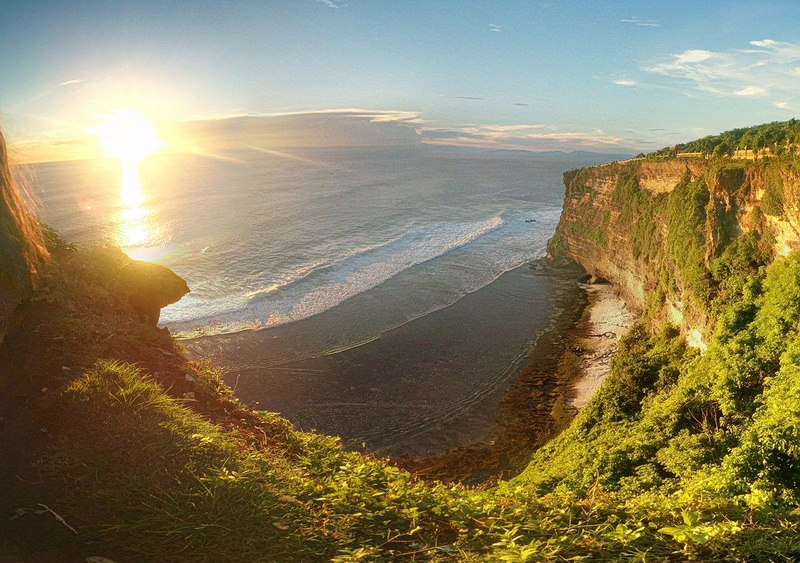
A view of the ocean from Uluwatu temple. Irena Tavpash
For adventure lovers, Balinese offer a sunrise trek to the active volcano. A 1,717 meters mount Batur with a caldera lake on a south side opens a breathtaking view from its top. Be prepared to bring tracking shoes, though, it is the only place where one would wear them on Bali island.
Move to Ubud city in the center of the island to spend few days among rice paddies, dense forest, and pilgrim destinations. It is also the place to try Indonesian cuisines and Balinese good karma massage with four hands (starts from $7).
Rice paddy field in Bali, close to Ubud city. Yuliana Romanyshyn
In terms of safety, Bali is the only one island among 13,466 ones on which Indonesia is located, where tourist should not afraid of Malaria mosquitoes as they simply do not exist there.

